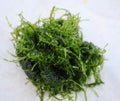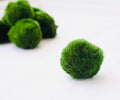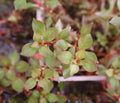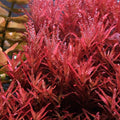A Summary of Fertilizers in a Planted Tank
Plants require light, air, and nourishment to survive and thrive. Those who are new to the planted tank hobby tend to concentrate on the first two, believing that this is one of the more complex ideas they will need to learn later.
It may seem like a lot to take in, but it just takes common sense to get started. Let us begin by acknowledging that every living entity needs sustenance. The following section will go over what nutrients your aquarium plants require.
Plant fertilizers are divided into two categories: macro and micro.
The Macronutrients
Aquatic plants use enormous amounts of macronutrients, often known as N-P-K (Nitrogen, Phosphorus, and Potassium). They are similar to carbs and proteins in our diet. These are required for plant development. Aquarium enthusiasts should administer these plant fertilizers on a regular basis, around an hour before "lights on."
The Micronutrients
Microaquarium fertilizers are made up of several minerals that plants require in small amounts for various tasks. Iron, calcium, magnesium, boron, and other trace elements are required for the plant's health. These trace elements are the plant world's vitamins and minerals. In contrast to macronutrients, these nutrients would be best administered after "lights out."
How Do I Select the Finest Aquarium Plant Fertilizers?
The ideal fertilizer product should validate the existence of these ingredients as well as the amount of each one. Do not put your confidence in a company that does not reveal this information. People need to know what things are made of and how much was used to manufacture them, much like when they buy food at the grocery store.
Nitrogen
Plants require a lot of nitrogen. This is the primary source of nutrition for all aquatic plants. Nitrogen is required for the development of new plant growth. A tank with an adequate Nitrogen supply features bright, green, healthy leaves and rapidly developing plants.
Nitrogen in the form of nitrates and as the end result of the nitrogen cycle will be created in a healthy, well-cycled aquarium, so how much nitrogen should be added to the aquarium must be carefully considered.
Nitrogen deficit is unlikely in a well populated tank; therefore, minimal, if any, supplementation is probable. As a result, most bottles of fertilizer designed for planted aquariums contain very little or none of this substance.
Phosphorus
A well-cycled tank almost certainly contains nitrogen and phosphorus. This is generally injected into the tank via the fish food supplied to the aquarium's fauna. Phosphorous is essential for plant cell development and general health, but as with Nitrogen, great thought must be given before introducing this component into the planted tank.
This will be in the tank anyway. One symptom that the tank lacks this nutrient is the emergence of an extremely dark, stunted leaf zone. Another issue is slow plant development.
Potassium
Potassium is required for plants to control water and certain nutrients. Because this is not generally available or generated in a planted aquarium, most aquarium plant food products focus on providing it.
Plants with highly healthy roots can be seen in an aquarium with enough potassium and phosphorus. Some stem plants have been recorded throwing roots in their central region, which is distant from the substrate.
In contrast to nitrogen and phosphorus, an overabundance of potassium in the water column has not been shown to produce algal development, but it will undoubtedly cause other difficulties. Leaf margin yellowing or browning indicates a potassium deficit. There is also evidence of slowed growth.
Iron
Iron is one of the most important micronutrients. Some businesses will even have a separate bottle of additional iron fertilizer.
Iron is required for the production of chlorophyll. This nutrient is responsible for the vibrant hues in a planted aquarium and is essential in the Dutch-style planted tank. Iron occurs in a variety of forms.
Plants may use Fe2, which is typically available as Ferrous Sulfate. Plants do not require a lot of it, but they do require it. Iron deficiency symptoms include a lack of pigment or coloration on new leaves, giving them a yellowish appearance. There are also visible green veins on the pale, old leaves.
Magnesium and Calcium
When these elements combine in water, they form the hardness of aquarium water. These nutrients are commonly found in tap water, unless the local tap water is very soft, which is uncommon. Simply monitor the plant's TDS as a realistic measure (Total Dissolved Solids).
If it falls too low, the tank water becomes too soft, and calcium and magnesium supplements are definitely required. If the TDS is too high, the aquarist may need to add soft water to balance the levels. However, most aquarists do not need to supplement this in a planted aquarium.
Twisted new growth is an indication of calcium deficiency, whereas magnesium deficiency exhibits symptoms similar to iron deficiency. The leaves get chlorotic, resulting in a yellowish appearance with darker veins. These symptoms frequently appear simultaneously.
Additional Micronutrients
Boron, Manganese, Molybdenum, and Zinc are other important micronutrients. These specific components are delivered in the form of a "all-in-one" fertilizer container. Even in small doses, these micronutrients are necessary for plant survival and general aquatic plant nutrition.
How should Micronutrients and Macronutrients be Administered?
We can supply fertilizers for planted aquariums in a variety of ways. Because it does not necessitate calculating the proportions of specific nutrients, a balanced general fertilizer is an ideal fertilization option for beginners in the aquarium hobby. With practice, you can begin to separate macro- and micronutrients in liquid fertilizer.
The use of these liquid fertilizers aids in the control of the development of more difficult species. These liquid fertilizers also allow for the growth of plants with brown and red hues. Such plants may require more nutrients or regulate the supply of particular nutrients to achieve full color.
Carbon Dioxide Fertilization
Carbon dioxide fertilization is especially recommended for tanks with a lot of light, although it is also useful in low-light aquariums. Why? To perform photosythesis, all plants require carbon dioxide. Plants are more stimulated to absorb CO2 from the water column in high light tanks.
Many plants, including Eriocaulon cinereum, are thought to be incapable of growing in planted tanks without the addition of CO2.CO2 is commonly found in large quantities in nature due to underground deposits of this gas and the decomposition of various organic compounds.
Because there isn't much CO2 in aquariums, fertilization with this element is particularly beneficial to plant growth. CO2 is also good for slow developing plants since it promotes them to grow more quickly.
Furthermore, this plant fertilizer has a very favorable effect on plant health and coloration. If you haven't tried CO2, read our detailed article on how to set up a CO2-enriched aquarium. We're confident that after setting up such an aquarium, you'll notice noticeable improvements in the appearance of your plants.
















